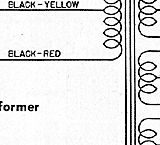

The rating of the device supplied by the secondary conductors or the OCPD at the termination of the secondary conductors, and You can install secondary conductors up to 10 feet long, without overcurrent protection at the point they receive their supply, if they have an ampacity that is not less than ( Fig. Scenario 3: Secondary conductors not over 10 feet long The disconnecting means must be located at a readily accessible location near the point of entrance of the conductors. The OCPD for the ungrounded conductors must be an integral part of a disconnecting means or located immediately adjacent to it. Terminate at a single circuit breaker (or a single set of fuses) that limit the load to the ampacity of the conductors. 1):Īre suitably protected from physical damage in a raceway or manner approved by the authority having jurisdiction (AHJ). Outside secondary conductors can be of unlimited length, without overcurrent protection at the point they receive their supply, if they ( Fig. This one is simply a reference to 240.21(B)(3), so apply 240.21(B)(3) if you have a tap-supplied transformer. Scenario 1: Secondary conductors from a feeder-tapped transformer Is the transformer supplied by a feeder tap? Choose Scenario 1. Is the secondary conductor under 10 feet long or between 10 and 25 feet long? Choose Scenario 3 or 4, but choose Scenario 5 if it's an industrial installation. Is the transformer outside? Choose Scenario 2. To pick the right one, answer three easy questions: Scenario 5: Secondary conductors 10 to 25 feet long, industrial installation. Scenario 4: Secondary conductors 10 to 25 feet long. Scenario 3: Secondary conductors not over 10 feet long. Scenario 2: Outside secondary conductors. Scenario 1: Secondary conductors from a feeder-tapped transformer. That same tip applies to transformer secondary conductors, which also have five scenarios. We also described an easy way to pick the correct scenario from the five possible. When we demystified feeder taps in the previous issue, we presented the information in an arrangement that differs from what you see in the NEC. As with feeder taps, the sizing of that transformer secondary conductor depends on its length and application. The rule is the same because the physics are the same. Normally, you can use the next highest overcurrent protective device (OCPD) above the ampacity of the conductors being protected, but not with transformer secondary conductors. Basic rulesĪs with feeder taps, you can't use the “next-size-up-OCPD” rule provided in 240.4(B) for any transformer secondary conductor. Let's take a closer look at 240.21(C) to help clear up any misconceptions. Similar to feeder taps, covered in the last issue, transformer secondary conductors can be every bit as confusing.


 0 kommentar(er)
0 kommentar(er)
